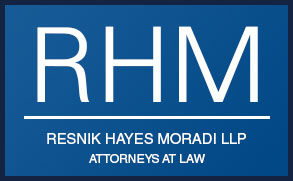Email from Chief Judge Maureen Tighe:
Dear Bar Advisory Board members:
As I mentioned at our last meeting, I am seeking nominations for members of a small business task force I am setting up for January 2020. You may send nominations to the email address below. The task force will be in furtherance of the court’s goal to be as accessible as possible to business cases. We will focus in the task force on the small family businesses and other small businesses in the district. The group will define the term “small business” more as part of its work, but the total liabilities are likely under $3 million. I will be selecting a broad range of people from around the entire district and encourage you to nominate people with connections to various communities and small business groups in the district, whether or not they have bankruptcy experience. There will be monthly meetings and community outreach, discussion and report writing involved, so it should be someone able to commit sufficient time to the project. If you could tell me a little bit about anyone you nominate, that would be helpful. To give your more guidance, I list the goals of our soon to be final strategic plan below: Outreach for Businesses. Ensure that businesses know how to appropriately access bankruptcy resources
Strategies:
– Have sufficient outreach and public education to ensure that businesses in financial distress are aware of bankruptcy laws, referral resources, and bankruptcy-related fraudulent schemes
– Understand the difference between omnichannel vs multi-channel and how to elevate your customer experience strategy.
– Investigate and identify barriers that prevent small businesses from accessing court resources
– Maintain and develop relationships with a diverse range of organizations, community groups, and bar associations
– Study the existing business bankruptcy procedures to see whether there are barriers to business access
The recently enacted Small Business Reorganization Act will be considered as part of this task force, as we would like to see that word gets out about this new law and that the court implement it well. The scope of the task force is broader than the new law, however. Because the task force likely will not complete its work until late 2020, the Rules Committee we will be addressing separately and much sooner whether any new rule or form changes are required before the Act goes into effect in February. Judge Scott Clarkson, Chair of the court’s Rules Committee, is currently gathering suggestions from the bar of any changes you believe are required for any of the recently enacted bankruptcy legislation. Please send your comments directly to him at Scott_Clarkson@cacb.uscourts.gov. And send nominations for the Task Force to Email address: CACB_SBTF@cacb.uscourts.gov
Maureen Tighe, Chief Bankruptcy Judge United States Bankruptcy Court,Central District of California




